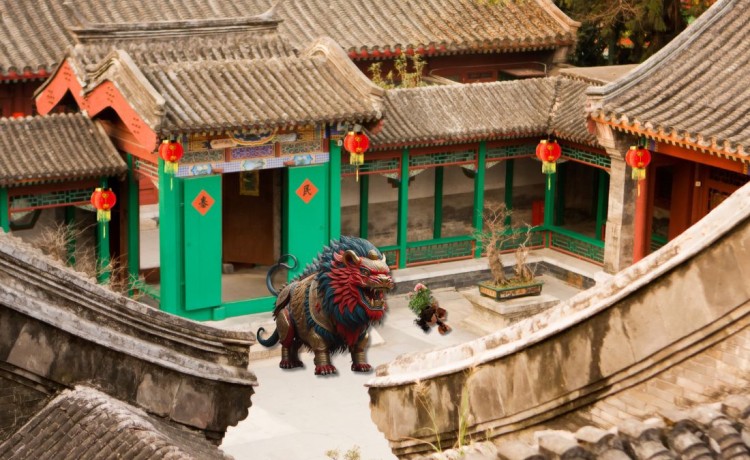Nian, a legendary creature deeply ingrained in Chinese folklore, holds profound symbolism within the cultural tapestry of the nation. This mythical creature is an essential element of the Chinese Spring Festival, also known as the Lunar New Year, representing a fusion of traditions, stories, and hopes that have been passed down through generations.
Nian, which translates to “year” in Mandarin, is far from an ordinary term. It conjures an image of a fierce, mythical beast that would emerge from its hiding place to wreak havoc on villages every year, usually during the time of the Lunar New Year. The legend is rooted in the distant past, often recounted as a tale of survival and adaptation. The Nian’s appearance was marked by destruction: it would devour crops, livestock, and even villagers. Fear gripped the hearts of those awaiting its arrival.
However, the villagers discovered a way to deter Nian’s assault. They observed that the creature was sensitive to loud noises, the color red, and bright lights. Armed with this knowledge, they began using firecrackers, red lanterns, and loud celebrations to fend off the beast. This strategic approach eventually led to the association of these elements with the Chinese Spring Festival.
The Chinese Spring Festival, also called the Lunar New Year, is the most important traditional holiday in Chinese culture. It marks the beginning of the lunar calendar and is celebrated by billions of people worldwide. The festival generally falls between late January and mid-February, depending on the lunar cycle. Nian’s legend and its connection to the Lunar New Year showcase the significance of passing down cultural practices that unite families and communities.
The Lunar New Year festivities combine a multitude of customs and rituals. People clean their homes to sweep away bad luck, decorate their surroundings with red paper cutouts and lanterns to welcome good fortune, and gather with family for lavish feasts. The giving of red envelopes, or “hongbao,” containing money symbolizes blessings and prosperity. Fireworks and firecrackers are set off not only to ward off Nian’s malevolent spirit but also to usher in the new year with joy and optimism.
Nian’s legacy continues to flourish as an embodiment of change, adaptation, and resilience. It symbolizes the transformative power of collective action in the face of adversity. The story of Nian also underlines the importance of traditions, reinforcing the idea that honoring one’s heritage fosters a sense of belonging and continuity.
In contemporary times, as China rapidly modernizes and globalizes, the Nian legend retains its cultural significance. While urban celebrations have evolved to incorporate modern elements, the core essence of the Lunar New Year — family reunions, festive decorations, and community bonding — remains intact. The tale of Nian serves as a reminder of the past while guiding the future, reminding individuals of the strength they possess to confront challenges together.
In conclusion, Nian stands as an emblem of cultural heritage, resilience, and unity. Its legendary presence during the Chinese Spring Festival and Lunar New Year connects generations and underscores the importance of adapting traditions to changing times. The mythical Nian is not merely a creature of folklore; it encapsulates the spirit of a nation, the warmth of family ties, and the anticipation of renewal that accompanies each passing year.
Want to learn more? We’re here to help you to take action, just like we’ve helped thousands of other entrepreneurs, business owners, and creative professionals all around the globe. Now is the time to let your passion SHINE. Now is the time to Make Tomorrow Today! To your success, Vinh Van Lam and Stuart Horrex Cofounders
ArtSHINE.com





